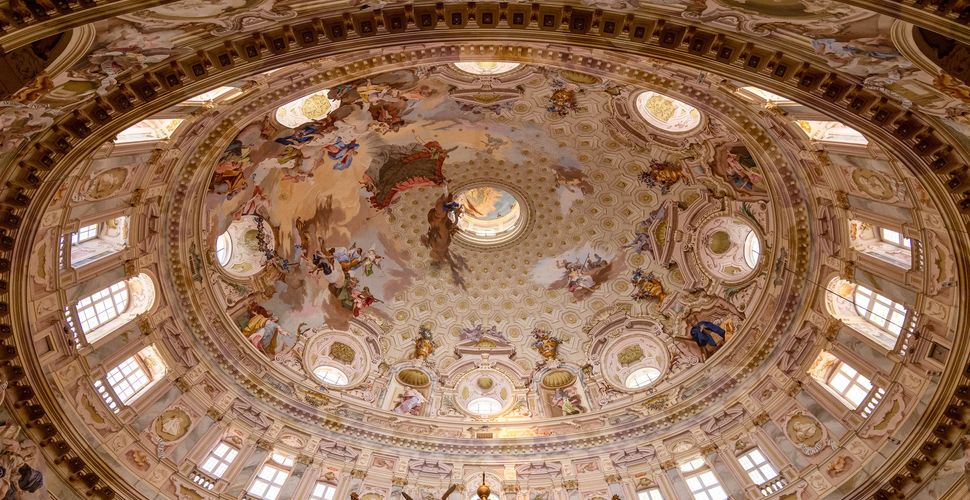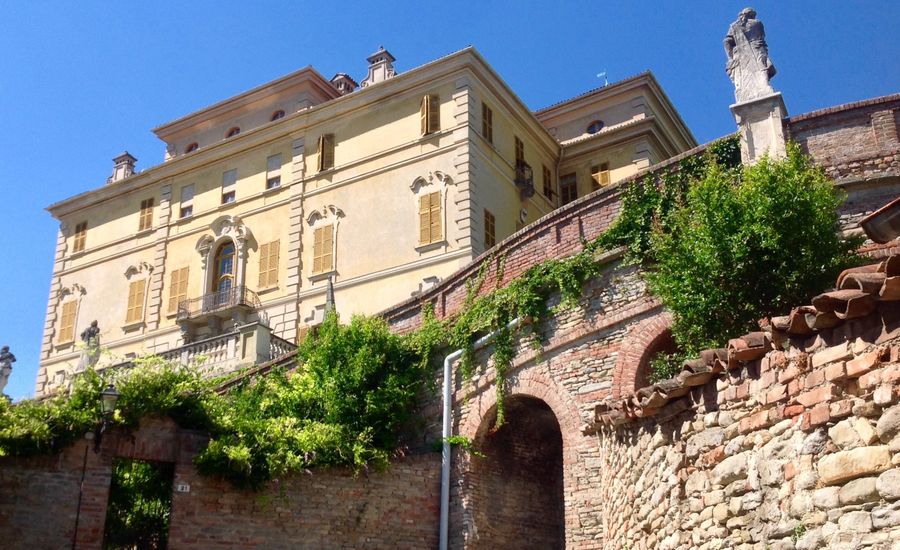The complex was first erected as a sanctuary in medieval times, when it consisted of only a modest pillar, decorated by a 15th century fresco depicting a Madonna and Child, built by a brick maker/kiln man to propitiate the proper firing of his bricks.
In 1592, during a hunt, Giulio Sargiano, a hunter mistakenly hit the image of the Virgin, whose wound, according to tradition, bled.
In actual fact, the hunter, ashamed, hung his blunderbuss on the pillar and began a collection to fund the repairs and so expiate his sin. Today, the harquebus can still be seen inside the Sanctuary, in the new rooms set up as a museum.
In a few years, the place became the destination of increasingly frequent pilgrimages, even coming to the attention of Duke Charles Emmanuel I, Duke of Savoy, who in 1596 ordered the construction of a great sanctuary, under the direction of the court architect, Ascanio Vittozzi.
It was the Duke's intention that the sanctuary would be outfitted to accommodate a large number of pilgrims, and that it should later become the mausoleum of the House of Savoy, where the family's tombs would rest, although this role was instead subsequently assigned to the Basilica of Superga, on the hill of the same name outside Turin.
Vittozzi died in 1615, when the structure has been completed up to the cornice, on which the circular base of the cupola was supposed to rest.
With the Duke's death, fifteen years later (and his burial in the Sanctuary), construction came to a complete halt, with the building remaining roofless for many years. But renewed interest was roused among the faithful, stirred by the solemn coronation of the Virgin of the pillar in 1682, in thanks for the end of the Salt War. Its construction was again taken up, this time without Savoy funding (most of which wasconcentrated on the construction of the Basilica of Superga) and thanks to the efforts of Francesco Gallo of Mondovì, an architect and engineer who tackled the daunting task beginning in 1728.
Above the powerful base in sandstone, of Mannerist design, the drum was rapidly built, with decidedly Baroque lines, followed by the cupola, finished in 1732. The imposing elliptical cupola built by Gallo, 74 meters high, with a main axis of 37.15 meters and a minor axis of 24.80 meters, was the cause of some concern.
In fact, when the supporting scaffolding was to be removed, the architect himself was allegedly obliged to do the job, because it was generally thought that the structure would collapse.
The frescoes decorating the more than six thousand square meters of surface area were completed between 1746 and 1748 by Mattia Bortoloni and Felice Biella; the theme is the Salvation.
In 1709 the sculptor Giuseppe I Gaggini accepted the assignment of creating a statuary monument to Margaret of Savoy, the Duke's daughter, which he completed in 1714.
The sanctuary assumed its present form in 1884, the year in which the three bell towers and three facades were built to design of the engineer and architect Camillo Riccio (who is also responsible for the pedestal of the majestic statue of Charles Emmanuel I with sword and cape).




